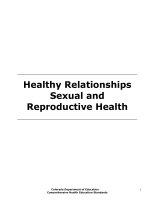Nutrition and Fish Health doc
Bạn đang xem bản rút gọn của tài liệu. Xem và tải ngay bản đầy đủ của tài liệu tại đây (4.41 MB, 393 trang )
Chhorn Lim
Carl D. Webster
Editors
Nutrition and Fish Health
Pre-pub li ca tion
REVIEWS,
COMMENTARIES,
EVALUATIONS . . .
“C
areful man agement of fish
nutrition and health are two
crit i cal fac tors in to day’s in ten sive
aquaculture sys tems. To have one ref-
er ence with the lat est in for ma tion in
both fields is ex tremely help ful. Chap-
ters on dis eases and health man age-
ment cover warm- and cold-water fish,
as well as salt water shrimp. Other
chap ters dis cuss the lat est nu tri tional
re quire ments for im por tant cul ture
groups. Chapters that dis cuss nu tri-
tion and health to gether are es pecially
in ter est ing. Nutrition and Fish Health
will be a valu able resource book for re-
search ers and pro duc ers.”
David B. Rouse, PhD
Pro fes sor of Fish eries,
Au burn Uni ver sity,
Au burn, AL
“N
utrition and Fish Health is a
com pi la tion of in for ma tion by
experts in the field of aquatic an imal
health and aquatic an imal nu trition.
This is the first such effort that relates
the im por tance of nu tri tional well-
being to the health of aquatic an imals
and their sus cep ti bil ity to in fec tious
diseases, and the abil ity of their im -
mune systems to re sist or control dis -
eases. This volume will be useful to
students and serve as a reference for
aquaculturists. Each chap ter per tains
to a spe cific dis ease or nu trition topic,
including an over view of warm-wa ter
fish dis eases, salmonid dis eases, vi ral
diseases of penaeid shrimp, and nutri-
tional as pects of marine and bait fish. I
would recommend this book to stu -
dents and researchers in the aquatic
animal health and aquatic an imal nu -
trition fields. I sa lute the ed itors, Drs.
Chhorn Lim and Carl Webster, for this
ex cel lent ef fort.”
Yolanda J. Brady, PhD
As so ci ate Pro fes sor,
Au burn Uni ver sity
De part ment of Fish eries
and Allied Aquaculture,
Au burn, AL
More pre-pub li ca tion
REVIEWS, COMMENTARIES, EVALUATIONS . . .
“T
his book is packed with infor-
mation. The first three chap ters,
for ex am ple, con dense in Reader’s Di -
gest form, up-to-date knowledge on
warm-wa ter fish dis eases, eco nom i -
cally im portant diseases of salmonids,
and the lat est in formation on shrimp
viruses. The rest of the book contains
chapters on nu trition that present the
latest in formation. The list of chap ter
authors reads like a who’s who in
aquaculture. If you are looking for the
lat est in for ma tion on dis eases and nu-
trition, this book is for you.”
James W. Avault Jr., PhD
Pres i dent,
AVA Pub lishing Com pany;
Pro fes sor Emer i tus,
LSU Ag ri cul tural Cen ter,
Baton Rouge, LA
Food Products Press
®
An Imprint of The Haworth Press, Inc.
New York • London • Oxford
NOTES FOR PROFESSIONAL LIBRARIANS
AND LIBRARY USERS
This is an orig inal book ti tle pub lished by Food Prod ucts Press®, an
imprint of The Haworth Press, Inc. Un less otherwise noted in spe cific
chapters with at tribution, ma terials in this book have not been previ-
ously pub lished elsewhere in any format or lan guage.
CONSERVATION AND PRESERVATION NOTES
All books pub lished by The Haworth Press, Inc. and its imprints are
printed on certified pH neu tral, acid free book grade paper. This pa per
meets the min i mum re quire ments of Amer i can Na tional Stan dard for
In for ma tion Sci ences-Per ma nence of Pa per for Printed Ma te rial,
ANSI Z39.48-1984.
Nutrition and Fish Health
FOOD PRODUCTS PRESS
Aquaculture
Carl David Webster, PhD
Senior Editor
Nutrition and Fish Health by Chhorn Lim and Carl D. Webster
Additional Titles of Related Interest:
Introduction to the General Principles of Aquaculture by Hans Ackefors,
Jay V. Huner, and Mark Konikoff
Freshwater Crayfish Aquaculture in North America, Europe,
and Australia: Families Astacide, Cambaridae, and Parastacidae
edited by Jay V. Huner
Economics of Aquaculture by Curtis M. Jolly and Howard A. Clonts
Nutrition
and Fish Health
Chhorn Lim
Carl D. Webster
Editors
Food Products Press®
An Imprint of The Haworth Press, Inc.
New York • London • Oxford
Published by
Food Products Press®, an imprint of The Haworth Press, Inc., 10 Alice Street, Binghamton, NY
13904–1580
© 2001 by The Haworth Press, Inc. All rights reserved. No part of this work may be reproduced or
utilized in any form or by any means, electronic or mechanical, including photocopying, microfilm,
and recording, or by any information storage and retrieval system, without permission in writing
from the publisher. Printed in the United States of America.
Cover design by Marylouise E. Doyle.
Library of Congress Cataloging-in-Publication Data
Nutrition and fish health / Chhorn Lim, Carl D. Webster, editors.
p. cm.
Includes bibliographical references (p. ).
ISBN 1-56022-887-3 (hardcover : alk. paper)
1. Fishes—Diseases. 2. Fishes—Nutrition. I. Lim, Chhorn. II. Webster, Carl. D.
SH171.N88 2001
639.8—dc21
00-049478
To my wife, Brenda, and our children,
Chheang Chhun, Chhorn Jr., and Brendan.
Chhorn Lim
To my wife, Caroline, our daughter, NancyAnn,
and our other “children,” Darwin, Poppins,
Michael, KC, and Barley.
Carl D. Webster
CONTENTS
About the Editors xiii
Contributors xv
Foreword xvii
Yolanda J. Brady
Preface xix
Acknowledgments xxi
Chapter 1. Overview of Warm-Water Fish Diseases 1
John A. Plumb
Introduction 1
Infectious Disease Agents 2
Disease Control 7
Chapter 2. An Overview of the Economically Important
Diseases of Salmonids 11
Joseph M. Groff
Scott E. LaPatra
Introduction 11
Bacterial Diseases 13
Viral Diseases 44
Parasitic Diseases 53
Conclusion 60
Chapter 3. The Penaeid Shrimp Viruses TSV, IHHNV,
WSSV, and YHV: Current Status in the Americas,
Available Diagnostic Methods, and Management
Strategies 79
Donald V. Lightner
Introduction 79
The Viruses of Concern: Biology, Range, and Hosts 82
Diagnostic Methods 88
The Threat of WSSV and YHV to the Americas 91
Strategies for Control of Virus Disease 92
Chapter 4. Overview of Nutritional Strategies Affecting
the Health of Marine Fish 103
Wendy M. Sealey
Delbert M. Gatlin III
Introduction 103
Dietary Approaches 104
Conclusions 112
Chapter 5. Nutritional Aspects of Health and Related
Components of Baitfish Performance 119
Rebecca Lochmann
Harold Phillips
Introduction 119
Nutrient Requirements 121
Summary 127
Chapter 6. Nutritional Deficiencies in Commercial
Aquaculture: Likelihood, Onset, and Identification 131
Ronald W. Hardy
Introduction 131
Likelihood of Deficiencies of Essential Nutrients 133
Evolution of Essential Nutrient Levels in Fish Diets 135
Onset and Identification of Nutritional Deficiencies 137
Other Nutritional Problems 144
Important Points for Fish Farmers 145
Chapter 7. Immunity and Disease Resistance in Fish 149
Craig A. Shoemaker
Phillip H. Klesius
Chhorn Lim
Introduction 149
The Immune Tissues and Organs of Fish 150
Innate Immunity and Disease Resistance 152
Humoral Immunity 155
Cell-Mediated Immunity 156
Factors Influencing Innate Resistance and Acquired
Immunity of Fish 156
Conclusion 158
Chapter 8. Dietary Ascorbic Acid Requirement for Growth
and Health in Fish 163
Meng H. Li
Edwin H. Robinson
Introduction 163
Deficiency Signs 164
Dietary Requirement 166
Reproduction 169
Immune Response and Disease Resistance 171
Stress Response 173
Assessment of Status 174
Tissue Storage 175
Use in Commercial Aquaculture 175
Chapter 9. Dietary Iron and Fish Health 189
Chhorn Lim
Phillip H. Klesius
Craig A. Shoemaker
Introduction 189
Deficiency and Toxicity Signs 190
Dietary Requirement 192
Bioavailability 193
Immune Response and Disease Resistance 194
Conclusion 196
Chapter 10. The Role of Dietary Phosphorus, Zinc,
and Selenium in Fish Health 201
Chhorn Lim
Phillip H. Klesius
Carl D. Webster
Introduction 201
Phosphorus 202
Zinc 203
Selenium 206
Conclusion 209
Chapter 11. Influence of Dietary Lipid Composition
on the Immune System and Disease Resistance
of Finfish 213
Shannon K. Balfry
David A. Higgs
Introduction 213
Fish Immunology: General Considerations 216
Dietary Fatty Acids and the Immune Response 221
Eicosanoid Synthesis and Activity 223
Dietary Fatty Acids, Eicosanoids, and the Immune Response 225
Chapter 12. Immunostimulants in Fish Diets 235
Ann L. Gannam
Robin M. Schrock
Introduction 235
The Genetic Basis of the Immune Response 237
Nutritional Contributions to the Immune Response 238
Immunostimulant Sources and Molecular Structure 239
Modes of Action of Immunostimulants 244
Pathogens and Immunostimulants 248
Relationship to Other Regulatory Systems 249
Dosage and Absorption 250
Basal Immunostimulatory Status 252
Pathogen-Host Interactions and Innate Disease Resistance 254
Life Stage Differences 256
Species Differences 257
Stress and Disease Resistance 258
Environmental Influences 259
Summary and Conclusions 260
Chapter 13. Mycotoxins in Fish Feeds 267
Bruce B. Manning
Introduction 267
Effect of Aflatoxin in Feeds on Fish and Other Animals 268
Other Mycotoxins Produced by Aspergillus Molds 270
Mycotoxins Produced by Penicillium Molds 271
Fusarium Mycotoxins and Their Effect on Fish
and Other Animals 272
Other Mycotoxins: The Ergot Alkaloids 276
Effect of Mycotoxins on the Immune Response 276
Sampling Technique for Mycotoxin Analysis
of Feed Commodities 278
Screening, Analysis, and Detection of Mycotoxins 278
Prevention of Mycotoxin Contamination in Grains
and Fish Feeds 280
Treatments to Reduce Mycotoxin Concentrations
in Fish Feeds 281
Regulatory Control of Mycotoxin Contamination 282
Conclusion 283
Chapter 14. Feed Allowance and Fish Health 289
Richard T. Lovell
Veronica O. Okwoche
Myung Y. Kim
Introduction 289
Methods 290
Effects of Feed Allowance on Growth and Health 293
Discussion 295
Chapter 15. Dietary Lipids and Stress Tolerance
of Larval Fish 301
Charles R. Weirich
Robert C. Reigh
Introduction 301
Essential Fatty Acids 302
Phospholipids 306
Conclusions 308
Chapter 16. Modulation of Environmental Requirements
of Finfish Through Nutrition 313
Joseph R. Tomasso
Delbert M. Gatlin III
Charles R. Weirich
Introduction 313
Modulation of Tolerance to Low Temperature 313
Modulation of Tolerance to Low Salinity 314
Modulation of Tolerance to Nitrite Exposure 315
Conclusions 315
Chapter 17. Vaccines: Prevention of Diseases
in Aquatic Animals 317
Phillip H. Klesius
Craig A. Shoemaker
Joyce J. Evans
Chhorn Lim
Introduction 317
Infectious Diseases in Aquaculture Systems 317
Immune Capacity of Aquatic Animals 319
Active and Passive Immunization 320
Vaccine Strategies 320
Immunization Routes Employed in Fish Vaccination 328
Reasons for Vaccine Failures 329
Age of Immunization 330
Immunostimulants and Adjuvants 331
Conclusion 331
Index 337
ABOUT THE EDITORS
Chhorn Lim, PhD, has more than 25 years of experience in aquaculture nu
-
trition and feed development research. Currently, he is the Nutrition Scien
-
tist at the Fish Diseases and Parasites Research Laboratory, U.S. Department
of Agriculture, Agricultural Research Services at Auburn, Alabama, where
he conducts research on the interactions between nutrition, immune system
function, and disease resistance. He also serves as Affiliate Professor of the
Department of Fisheries and Allied Aquaculture, Auburn University, and an
Affiliate Researcher of the University of Hawaii Institute of Marine Biology
in Kaneohe, Hawaii. Dr. Lim has performed several long- and short-term
consultancies and has received several honors and awards in recognition of
his contributions and outstanding achievements. He is a member of several
professional organizations and an editorial board member of the Journal of
Applied Aquaculture. He has authored or co-authored more than 75 publica-
tions and abstracts, including book chapters and a book of which he is the
senior editor.
Carl D. Webster, PhD, has more than 10 years of experience in aquaculture
nutrition and diet development research. Currently, he is Principal Investi-
gator for Aquaculture at the Aquaculture Research Center, Kentucky State
University, where he conducts research on nutrition requirements and prac-
tical diet formulations for fish and crustacean species that are currently or
potentially cultured. He is also Associate Professor of the Department of
Math and Sciences at Kentucky State University and is Adjunct Professor of
the Department of Animal Sciences at the University of Kentucky. Dr. Web-
ster has been elected twice to serve as Secretary/Treasurer of the U.S. Chap-
ter of the World Aquaculture Society (now known as the U.S. Aquaculture
Society, a Chapter of the World Aquaculture Society), and was elected Pres
-
ident of the U.S. Chapter of the World Aquaculture Society. He is a member
of several professional organizations and is editor of the Journal of Applied
Aquaculture. He has authored or co-authored more than 60 publications in
refereed, peer-reviewed journals, numerous lay publications, and several
book chapters.
CONTRIBUTORS
Shannon K. Balfry, PhD, West Vancouver Laboratory, West Vancouver,
British Columbia, Canada.
Joyce J. Evans, PhD, USDA-ARS Aquatic Animal Health Research Labo
-
ratory, Auburn, Alabama.
Ann L. Gannam, PhD, U.S. Fish and Wildlife Service, Abernathy Fish
Technology Center, Longview, Washington.
Delbert M. Gatlin III, PhD, Department of Wildlife and Fisheries Sci
-
ences and Faculty of Nutrition, Texas A&M University, College Station,
Texas.
Joseph M. Groff, VMD, PhD, Department of Pathology, Microbiology,
and Immunology, School of Veterinary Medicine, University of California,
Davis, California.
Ronald W. Hardy, PhD, Hagerman Fish Culture Experiment Station, Uni-
versity of Idaho, Hagerman, Idaho.
David A. Higgs, PhD, Department of Fisheries and Oceans, West Vancou-
ver Laboratory, West Vancouver, British Columbia, Canada.
Myung Y. Kim, PhD, Department of Fisheries and Allied Aquacultures,
Auburn University, Auburn, Alabama.
Phillip H. Klesius, PhD, USDA-ARS Aquatic Animal Health Research
Laboratory, Auburn, Alabama.
Scott E. LaPatra, PhD, Clear Springs Foods, Inc., Research Division,
Buhl, Idaho.
Meng H. Li, PhD, Thad Cochran National Warmwater Aquaculture Cen
-
ter, Mississippi State University, Stoneville, Mississippi.
Donald V. Lightner, PhD, Department of Veterinary Science and Micro
-
biology, University of Arizona, Tucson, Arizona.
Rebecca Lochmann, PhD, Department of Aquaculture and Fisheries, Uni
-
versity of Arkansas at Pine Bluff, Pine Bluff, Arkansas.
Richard T. Lovell, PhD, Department of Fisheries and Allied Aquacultures,
Auburn University, Auburn, Alabama.
Bruce B. Manning, PhD, Thad Cochran National Warmwater Aquaculture
Center, Mississippi State University, Stoneville, Mississippi.
Veronica O. Okwoche, PhD, Department of Fisheries and Allied Aqua
-
cultures, Auburn University, Auburn, Alabama.
Harold Phillips, MSc, Department of Aquaculture and Fisheries, Univer
-
sity of Arkansas at Pine Bluff, Pine Bluff, Arkansas.
John A. Plumb, PhD, Southeastern Cooperative Fish Disease Project, De
-
partment of Fisheries and Allied Aquacultures, Alabama Agriculture Ex
-
periment Station, Auburn University, Auburn, Alabama.
Robert C. Reigh, PhD, Aquaculture Research Station, Louisiana Agricul
-
tural Experiment Station, Louisiana State University, Baton Rouge,
Louisiana.
Edwin H. Robinson, PhD, Thad Cochran National Warmwater Aqua-
culture Center, Mississippi State University, Stoneville, Mississippi.
Robin M. Schrock, MSc, U.S. Geological Survey, Biological Resources
Division, Columbia River Research Laboratory, Western Fisheries Re-
search Center, Cook, Washington.
Wendy M. Sealey, PhD, Department of Wildlife and Fisheries Sciences
and Faculty of Nutrition, Texas A&M University, College Station, Texas.
Craig A. Shoemaker, PhD, USDA-ARS, Aquatic Animal Health Re-
search Laboratory, Auburn, Alabama.
Joseph R. Tomasso, PhD, Department of Aquaculture, Fisheries, and
Wildlife, Clemson University, Clemson, South Carolina.
Charles R. Weirich, PhD, Aquaculture Research Station, Louisiana Agri-
cultural Experiment Station, Louisiana State University, Baton Rouge,
Louisiana.
Foreword
I am honored to write some words of introduction to this important book
titled Nutrition and Fish Health. It spans the topics of nutrition, the interre
-
lationship between nutrition and immune function, and disease resistance of
economically important fish and shellfish. Nutrition and Fish Health is a
compilation of chapters written by scientists who have been actively in
-
volved in the field of nutrition and aquatic animal health. The editors, Dr.
Chhorn Lim and Dr. Carl D. Webster, are leading authorities in fish and
shellfish nutrition. Further, during the past several years, Dr. Lim’s research
efforts have been in the area of nutrition as it relates to fish health. This book
is the first such effort that brings together information on the nutritional
well-being of aquatic animals and the interrelationship to infectious disease,
resistance, and the ability of their immune systems to control diseases.
Aquaculture production has greatly increased in recent years. Fish have
become less dependent on natural food and more on prepared diets. There-
fore, the availability of least cost, nutritionally balanced diets is critical to
the success of the aquaculture industry. Given the important relationship be-
tween nutrition and infectious diseases, poor nutrition or poor feeding prac-
tices may lead to a reduced immune system response and lower the ability of
fish and shellfish to resist disease. This book begins with up-to-date over-
views of the diseases of warmwater fish, economically important diseases
of salmonids, and shrimp viral diseases. Marine fish and larval fish nutrition
are also discussed. Subsequent articles detail feeding management to dis-
ease resistance, vitamin and mineral requirements, immunostimulants and
aflatoxins to better understand the interrelationship of nutrition and fish
health. I believe this book will serve as an excellent reference for students,
fish nutritionists, fish health specialists, and aquaculturists.
Yolanda J. Brady, PhD
Associate Professor of Aquatic Animal Health
Department of Fisheries
and Allied Aquacultures
Auburn University
Auburn, AL
Preface
Aquaculture constitutes a vital and rapidly growing segment of agriculture
worldwide. New technological advances and increased demand for fish as a
source of animal protein are expected to accelerate the industry’s growth in
the near future. As the industry continues to expand, the culture methods have
become more intensive for the purpose of producing higher yields per unit
area. Infectious disease is the major cause of economic loss in intensive cul
-
ture operations. In the United States, current methods for disease treatment
are limited to a number of government-approved antibiotics or chemothera
-
peutics that are marginally effective. Some of the problems arising from the use
of the drugs, either by means of medicated diets or water treatments, are high
cost, creation of antibiotic-resistant pathogens, required withdrawal period, and
environmental contamination. For these reasons, aquaculturists are interested in
developing cost-effective preventive measures that can prevent the outbreak or
reduce the severity of epizootics. One such preventive measure is the develop-
ment of various nutritional strategies that might lessen or eliminate diseases,
something which is currently being examined by the aquaculture industry.
The significance of nutrition as a key factor in maintaining the health of
humans and other animal species, including fish, has been recognized for
many years. Earlier research on the relationships between nutrition, im-
mune response, and disease resistance has focused on humans and other ter-
restrial animals. In the past two decades, however, attempts to conduct
similar studies utilizing fish have met with limited success due to an incom-
plete understanding of the immune response in fish. Evidence from either
unintentional or intentional infection of fish occurring in some of these nu-
tritional investigations appears to indicate that most, if not all, dietary nutri-
ents have an influence on immune function and disease resistance. A
deficiency or excess of any nutrient could have a profound effect on the in
-
fection and survival of fish, largely through its effects on host defense mech
-
anisms. Other factors such as nutrient bioavailability and interactions, the
presence of immunostimulants and toxins, and feeding management also in
-
fluence fish health. This clearly demonstrates the potential role that nutri
-
tion can play in improving immune response and disease resistance in fish.
This book should be useful for nutritionists, disease specialists, feed for
-
mulators, students, extension specialists, and aquaculturists. It begins with
an overview of diseases affecting warm-water and cold-water fish and
shrimp viral diseases. Nutritional strategies affecting the health of marine
and baitfish and nutritional deficiencies in commercial aquaculture settings
are provided. Immune system functions and disease resistance in fish are
presented to provide the readers with a better understanding of the effects of
dietary nutrients (ascorbic acid, iron, and other minerals, and lipids and fatty
acids); additives and contaminants (immunostimulants and mycotoxins);
and feed allowance as they relate to fish health. The impacts of dietary lipids
and environment on the stress tolerance of fish and altering environmental
tolerances of fish through dietary modifications are also presented. The use
of vaccines as a management strategy to prevent diseases of aquatic species
is also included to provide a balanced description of disease preventive mea
-
sures.
The information contained in this book is by no means complete. More
-
over, it is apparent from this book that fish immunonutrition is a relatively
young discipline. It is hoped, however, that this book will fulfill its intended
purpose to provide a better understanding of and put into perspective the
complex interrelationship between nutrition and fish health, as well as to ac
-
celerate research in this area. It is also hoped that future aquaculture diets
will be formulated to provide not only optimum growth and feed efficiency
but also improved fish health.
Chhorn Lim
Carl D. Webster









